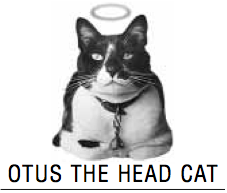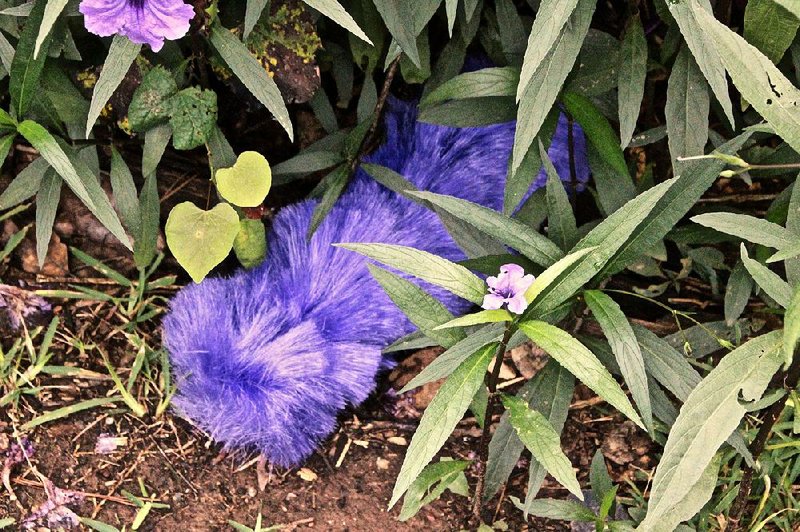Dear Otus,
We look forward each fall to the arrival of The Old Farmer’s Almanac in order to plan ahead for winter. With an 80 percent success rate, how can we not trust their judgment? How do you feel about it?
— Delmar O’Donnell,
Hot Springs Village Dear Delmar,
It was wholly a pleasure to hear from you and to thank you for the opportunity to debunk this annual blight upon science and natural meteorological prognostication methods.
The Old Farmer’s Almanac, which has been foisting its snake oil on an unwitting public since 1792, boasts of being the oldest continuously published periodical in North America. It’s not only fake news, but fake forecasting.
Like the recipes for KFC, Coca-Cola and McDonald’s “secret sauce,” the Almanac has a secret formula for predicting the weather that was devised by its founder, Robert B. Thomas, back in the day.
Thomas monitored solar activity, crop and astrology cycles and multi-year weather patterns to devise a forecasting calculation which is still in use today despite modern methods. Few outside the Almanac’s nepotistic executive coterie have ever seen the formula. It’s kept in a hermetically sealed original 1825 Thomas Kensett oyster tin in a Diebold floor safe at the Almanac offices in Dublin, N.H.
Just like your daily horoscope, the Almanac’s forecasts are kept intentionally vague so that a high percentage of success can be technically claimed.
How vague? Today’s Libra horoscope is a good example: “When the fish wander home cooking gently, who’ll be there to open the froth?”
What the heck does that even mean?
As far as the Almanac forecast is concerned, the only thing new since the 18th century is the influence of sunspots. The forecast still breaks the country into 16 regions. Arkansas is in the “Deep South,” which includes Louisiana, Tennessee, Mississippi, Alabama, a chunk of the Florida panhandle and a slice of northwest Georgia.
Talk about vague, this winter’s forecast, which was prepared 14 months in advance, says, “Winter will be warmer than normal, on average, with the coldest periods in early January, and early February.”
Coldest in January and February? Well, duh.
The 30-year average high temperature in Little Rock for January is 51 degrees with a low of 32. If that ends up being 52 and 33 this winter, then the Almanac can claim its “warmer” prediction was accurate.
However, the Almanac has been busted by none other than the National Weather Service. It says weather forecasting can only be semi-accurate up to 16 days out. Period.
There are, however, a few tried-and-true harbingers of winter that have proved unerringly accurate over the centuries. The National Oceanic and Atmospheric Administration calls these predictors “ecological indicators.”
At 32 weather stations across the country, NOAA monitors molting chickens, notes how many nuts squirrels are burying, measures the thickness of the shells and the height of hornet’s nests above the ground.
It also checks for rough skins on onions and measures the fat on skunks (that one’s tricky). It also notes the height and thickness of spider webs and measures how deep ants are burrowing.
But by far the most accurate natural predictor of winter is the purple woolly worm (Purpura vermis), which is native to the deep South. The worms have a paratympanic organ that acts as a long-range barometer and triggers visible reactions.
The woolly worm has 13 distinct segments ranging in color from plum and lavender to amethyst. The darker purple the segments are — and the longer the urticating setae — the colder and wetter the winter will be.
NOAA’s woolly worm monitoring station in Arkansas is Willy Williams’ 18-acre Clearpoint Creek Woolly Worm Wranch just northwest of Stuttgart.
“About 80 percent of our worms this year range from mulberry to mauve with two-inch bristles,” Williams warns. “The other 20 percent are heliotrope and only have long hairs on their southern exposures.”
What does this mean?
“It means a colder and wetter winter,” Williams predicted. “The Old Farmer’s Almanac is full of beans.”
Until next time, Kalaka reminds you that forecasting winter by noting how high muskrats burrow holes on a river bank is just plain claptrap. And don’t get him started on spoons in persimmon seeds.
Disclaimer
Fayetteville-born Otus the Head Cat’s award-winning column of humorous fabrication appears every Saturday. E-mail:
mstorey@arkansasonline.com

Disclaimer: Fayetteville-born Otus the Head Cat's award-winning column of 👉 humorous fabrication 👈 appears every Saturday.
